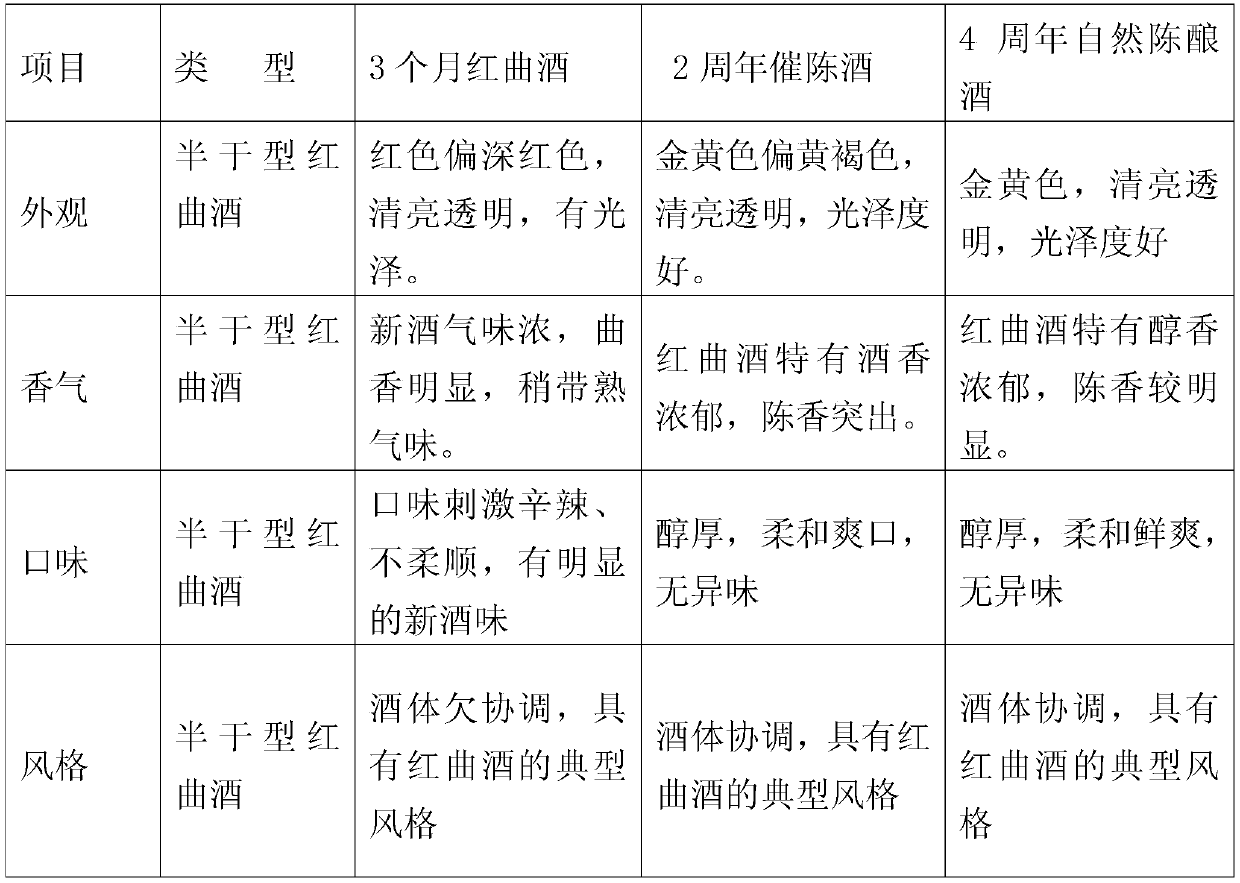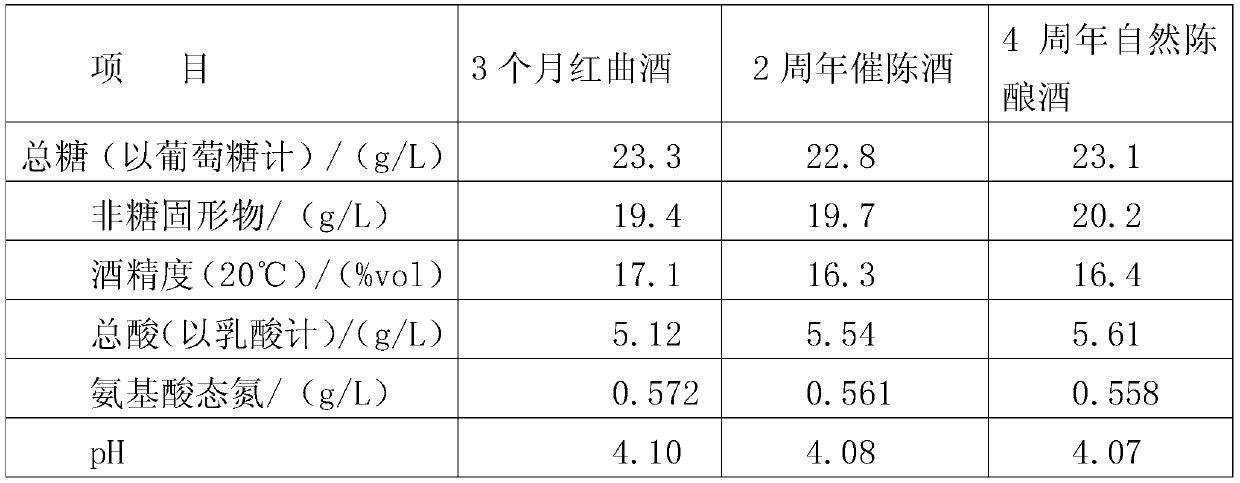An open-air storage method for aging red yeast rice wine
A storage method, the technology of red koji wine, applied in the field of open-air storage of red koji wine, can solve the problems of long natural aging period of wine body, not in line with the pursuit of healthy wine, and slow fragrance change, so as to improve inventory and capital Efficiency in use, clear and transparent appearance, outstanding aging effect
- Summary
- Abstract
- Description
- Claims
- Application Information
AI Technical Summary
Problems solved by technology
Method used
Image
Examples
Embodiment 1
[0032] The present invention is realized by adopting the following technical solutions:
[0033] A method for aging open-air storage of red yeast rice wine is characterized in that it comprises the following steps:
[0034] Retirement, altar sealing and open storage;
[0035] Among them, during the aging step, the red koji wine is pumped into the aging tank, and the temperature of the wine body in the aging tank is controlled at 65-68°C. While ensuring the above temperature, the wine body is heated every 6 hours for 30 minutes. The cycle promotes the arrangement and association between the molecules of the wine body. After 168 hours, the wine body is heated to 85°C.
[0036] In the step of sealing the altar, clean the pottery jar and sterilize it with steam for more than 15 minutes. The sterilization temperature is 95°C. Seal it with the altar cover, and then seal the altar soil on the altar cover;
[0037] After the pottery altar sealing soil is dry and firm, store it in t...
Embodiment 2
[0052] Different from the above-mentioned embodiment, the described altar sealing soil mainly includes 45 parts of khaki soil, 30 parts of slaked lime, 1 part of dry straw and 0.8 part of rice husk. When making, the dry rice straw is first crushed into 1-3 cm fragments, and then mixed with other raw materials evenly.
Embodiment 3
[0054] Different from the above-mentioned examples, the described altar sealing soil mainly consists of 30 parts of yellow soil, 22 parts of slaked lime, 0.8 part of dry straw and 0.7 part of rice husk. When making, the dry rice straw is first crushed into 1-3 cm fragments, and then mixed with other raw materials evenly.
PUM
 Login to View More
Login to View More Abstract
Description
Claims
Application Information
 Login to View More
Login to View More - R&D
- Intellectual Property
- Life Sciences
- Materials
- Tech Scout
- Unparalleled Data Quality
- Higher Quality Content
- 60% Fewer Hallucinations
Browse by: Latest US Patents, China's latest patents, Technical Efficacy Thesaurus, Application Domain, Technology Topic, Popular Technical Reports.
© 2025 PatSnap. All rights reserved.Legal|Privacy policy|Modern Slavery Act Transparency Statement|Sitemap|About US| Contact US: help@patsnap.com


